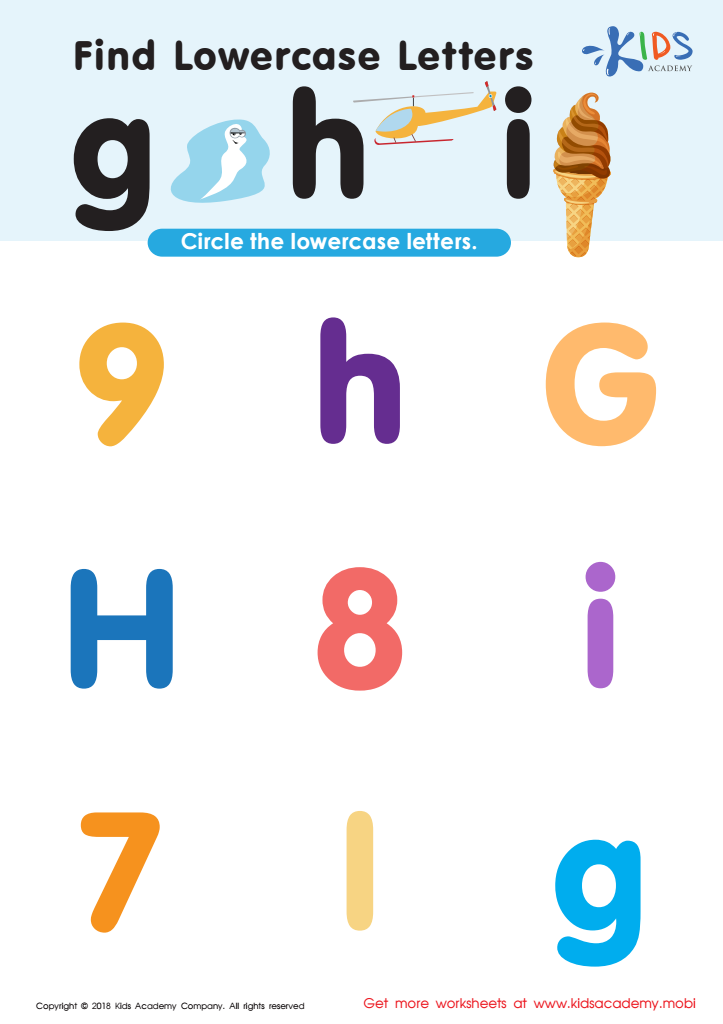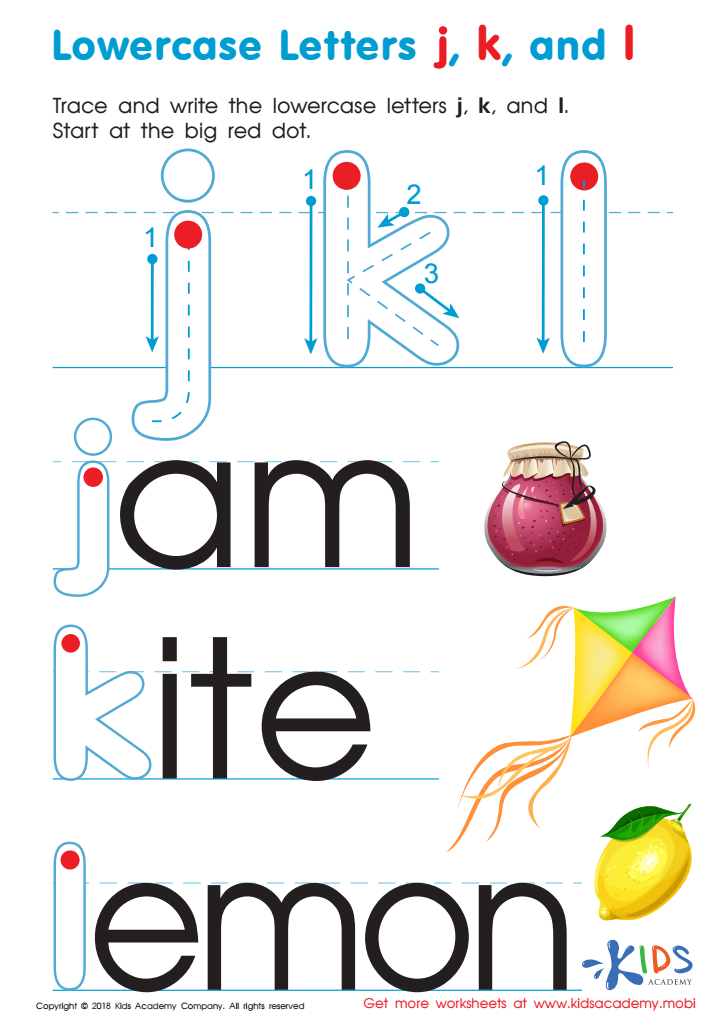Alphabet sequencing Lowercase/Small Letters Worksheets for Ages 4-8
3 filtered results
-
From - To
Enhance your child's alphabet skills with our engaging "Alphabet Sequencing Lowercase/Small Letters Worksheets" designed for ages 4-8. These printables help kids understand letter order and develop early literacy through fun, hands-on activities. Perfect for preschool and early elementary learners, our worksheets support phonics awareness, fine motor skills, and cognitive development. Each page is crafted to make learning enjoyable and effective, featuring colorful and relatable illustrations. Whether in the classroom or at home, give your child the confidence to master the alphabet with these thoughtfully designed educational resources. Download now and nurture the joy of learning!


Find Lowercase Letters g h i Worksheet


Lowercase Letters p q r Worksheet


Lowercase Letters j k l Worksheet
At ages 4-8, children undergo crucial stages of cognitive and literacy development, making alphabet sequencing in lowercase letters essential. Mastering the sequence aids in reading fluency and comprehension because text in books primarily uses lowercase letters. Familiarity with alphabetical order builds a strong foundation for recognizing patterns and predicting letter positions in a systematic way, which translates to quicker identification and processing of words while reading.
Sequencing also enhances phonemic awareness, a skill critical for decoding new words and spelling. When children can reliably discern the order of letters, they better understand the correspondence between letters and sounds, paving the way for proficient reading and writing. Additionally, alphabet sequencing fosters other important skills, such as memory and concentration, which benefit overall academic performance.
Teachers And parents play vital roles by integrating playful, engaging activities such as alphabet puzzles, sequencing songs, and interactive games that promote this learning. Active participation by caregivers not only reinforces educational concepts but also strengthens the child’s motivation and confidence. Thus, ensuring that children master alphabet sequencing equips them with essential literacy skills, supports their broader educational journey, and cultivates a lifelong love for reading and learning.
 Assign to My Students
Assign to My Students










